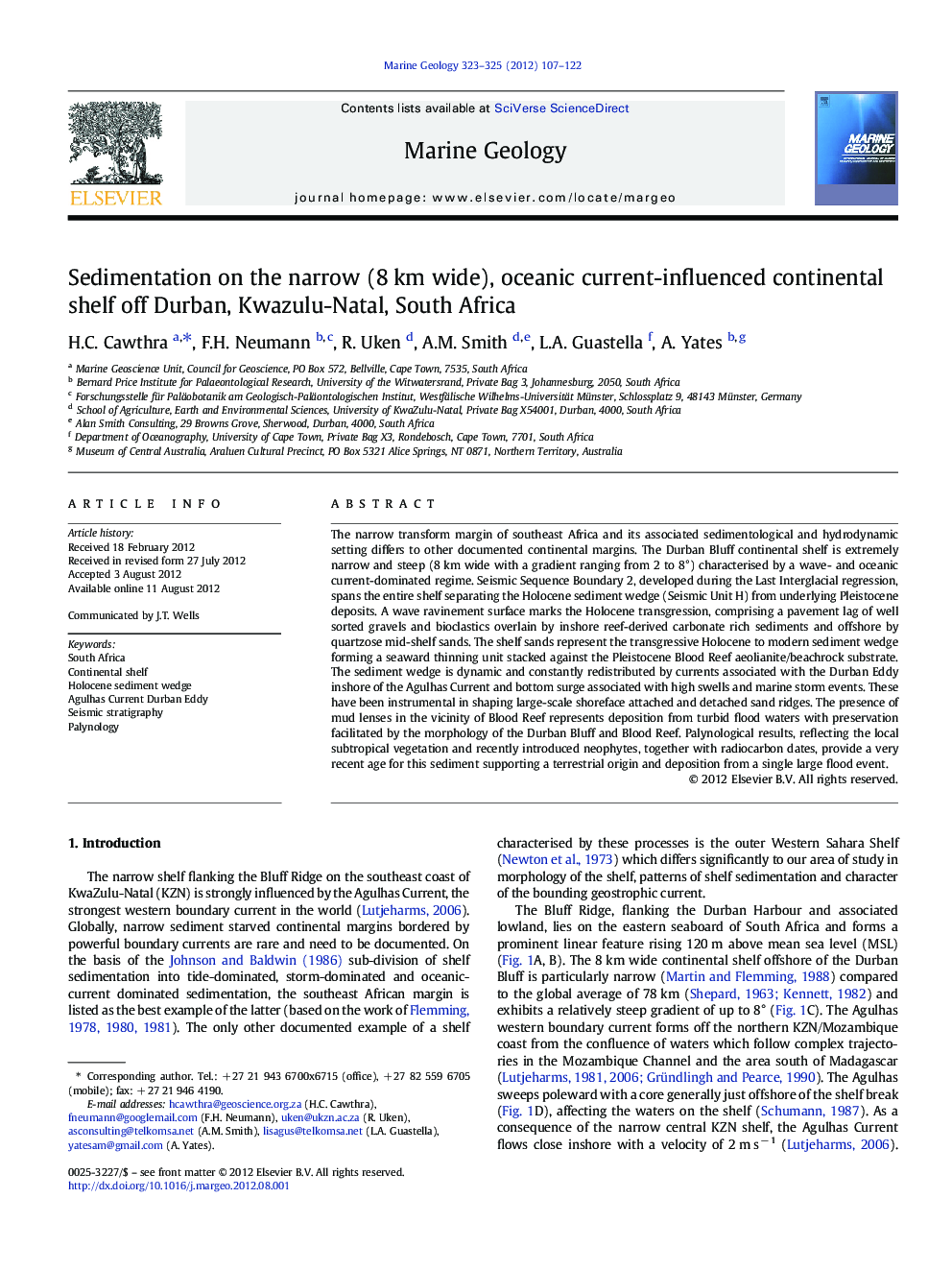| کد مقاله | کد نشریه | سال انتشار | مقاله انگلیسی | نسخه تمام متن |
|---|---|---|---|---|
| 4718544 | 1639121 | 2012 | 16 صفحه PDF | دانلود رایگان |

The narrow transform margin of southeast Africa and its associated sedimentological and hydrodynamic setting differs to other documented continental margins. The Durban Bluff continental shelf is extremely narrow and steep (8 km wide with a gradient ranging from 2 to 8°) characterised by a wave- and oceanic current-dominated regime. Seismic Sequence Boundary 2, developed during the Last Interglacial regression, spans the entire shelf separating the Holocene sediment wedge (Seismic Unit H) from underlying Pleistocene deposits. A wave ravinement surface marks the Holocene transgression, comprising a pavement lag of well sorted gravels and bioclastics overlain by inshore reef-derived carbonate rich sediments and offshore by quartzose mid-shelf sands. The shelf sands represent the transgressive Holocene to modern sediment wedge forming a seaward thinning unit stacked against the Pleistocene Blood Reef aeolianite/beachrock substrate. The sediment wedge is dynamic and constantly redistributed by currents associated with the Durban Eddy inshore of the Agulhas Current and bottom surge associated with high swells and marine storm events. These have been instrumental in shaping large-scale shoreface attached and detached sand ridges. The presence of mud lenses in the vicinity of Blood Reef represents deposition from turbid flood waters with preservation facilitated by the morphology of the Durban Bluff and Blood Reef. Palynological results, reflecting the local subtropical vegetation and recently introduced neophytes, together with radiocarbon dates, provide a very recent age for this sediment supporting a terrestrial origin and deposition from a single large flood event.
► The Durban Bluff Holocene sediment wedge consists of four sedimentary facies.
► These sediments are shaped by the Agulhas Current and Durban Eddy.
► Pollen bearing terrigenous muds (< 50 years) occur in a high-energy environment.
Journal: Marine Geology - Volumes 323–325, 1 September 2012, Pages 107–122